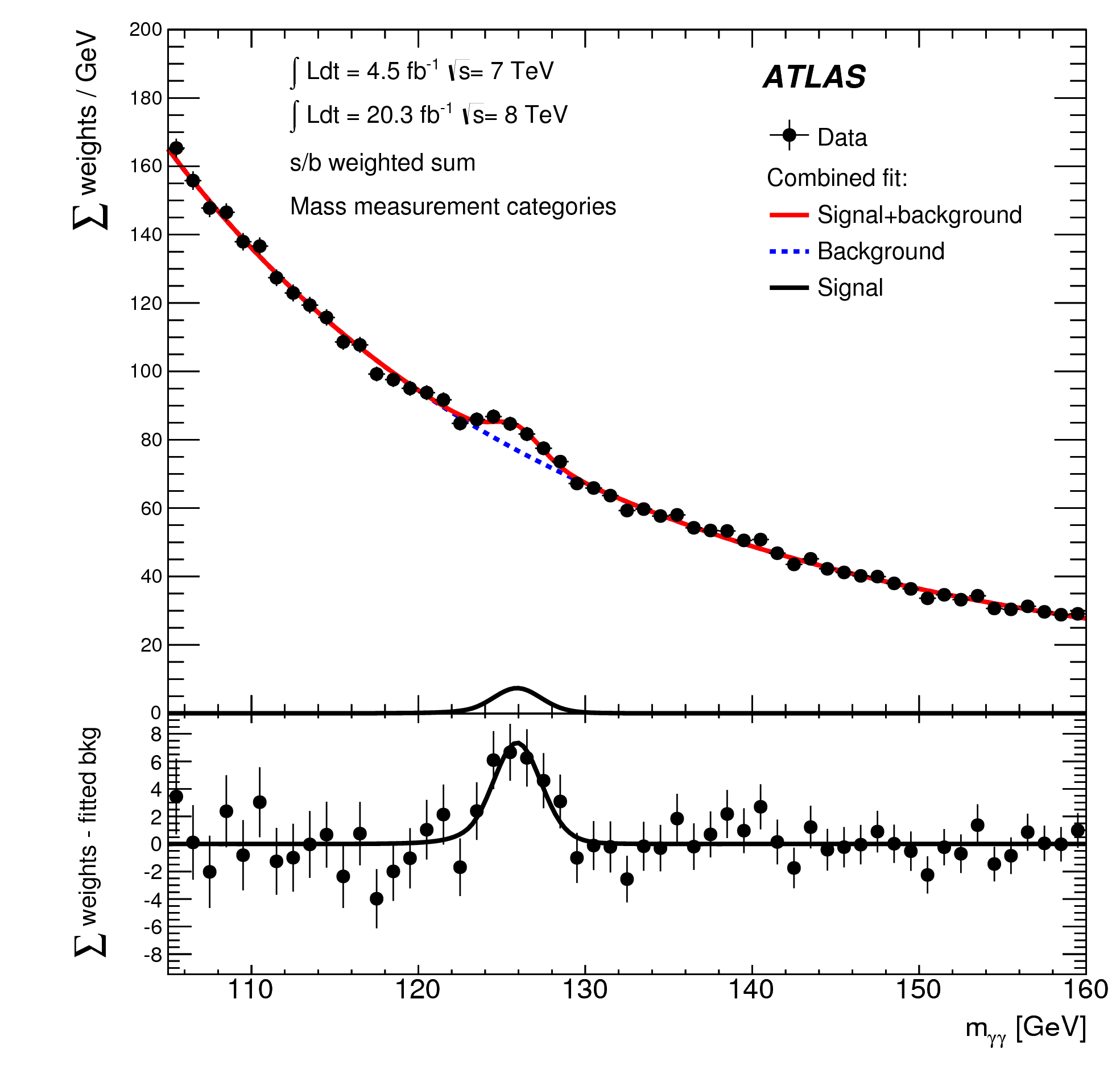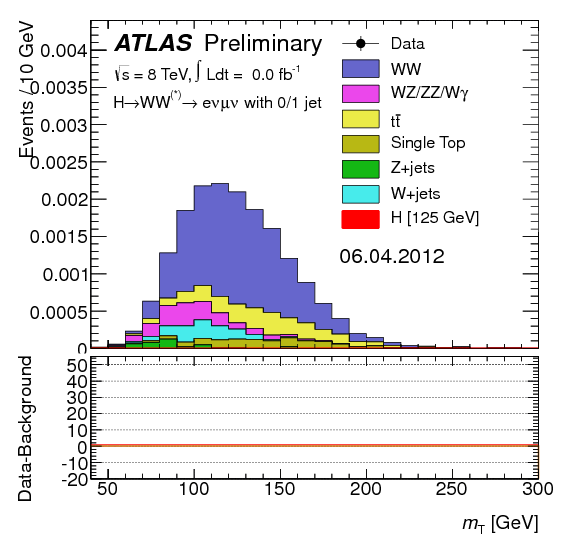Higgs boson
 One of the open questions in particle physics is the origin of the mass of the elementary particles. In the standard model, the Higgs mechanism has been introduced to generate masses for the elementary particles without making the model lose its predictive power. Besides giving mass to particles, the Higgs mechanism also predicts the existence of another particle: the Higgs boson. The Higgs boson has been looked for for almost 40 years, and may finally have been discovered by the ATLAS and CMS experiments in 2012. The mass of the Higgs boson is found to be around 125 GeV.
One of the open questions in particle physics is the origin of the mass of the elementary particles. In the standard model, the Higgs mechanism has been introduced to generate masses for the elementary particles without making the model lose its predictive power. Besides giving mass to particles, the Higgs mechanism also predicts the existence of another particle: the Higgs boson. The Higgs boson has been looked for for almost 40 years, and may finally have been discovered by the ATLAS and CMS experiments in 2012. The mass of the Higgs boson is found to be around 125 GeV.
 Our group is making significant contributions to the Higgs boson research at the LHC. We are focusing on two decay modes of the Higgs boson, decays into two W bosons and decays into two muons. The former is one of the most important decay modes for studying the Higgs boson properties at the LHC. In this channel we have contributed to a precise signal strength measurement (CERN courier article) of Standard Model Higgs boson decays. But this channel is also used for searches for additional Higgs bosons with higher masses predicted by beyond the Standard Model theories. The Higgs boson decay into two muons has not been observed yet due to its very small predicted decay ratio. Since these decays have not been observed yet, there is no universal coupling of the Higgs boson to leptons. Using the coming LHC Run 2 data it will be possible to further investigate this important Higgs boson decay channel to second generation particles.
Our group is making significant contributions to the Higgs boson research at the LHC. We are focusing on two decay modes of the Higgs boson, decays into two W bosons and decays into two muons. The former is one of the most important decay modes for studying the Higgs boson properties at the LHC. In this channel we have contributed to a precise signal strength measurement (CERN courier article) of Standard Model Higgs boson decays. But this channel is also used for searches for additional Higgs bosons with higher masses predicted by beyond the Standard Model theories. The Higgs boson decay into two muons has not been observed yet due to its very small predicted decay ratio. Since these decays have not been observed yet, there is no universal coupling of the Higgs boson to leptons. Using the coming LHC Run 2 data it will be possible to further investigate this important Higgs boson decay channel to second generation particles.

